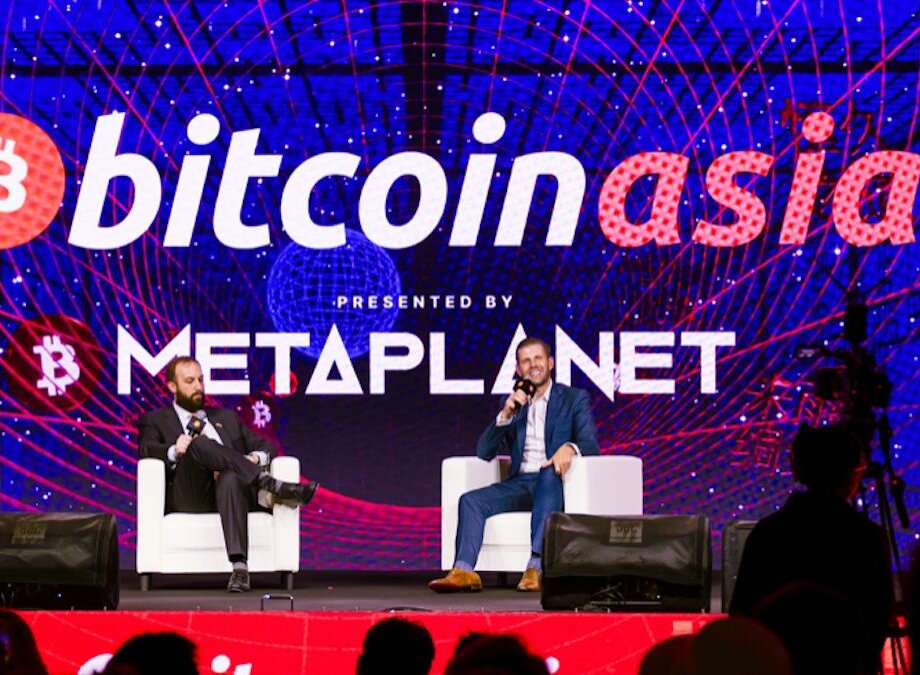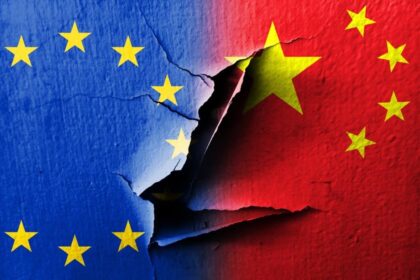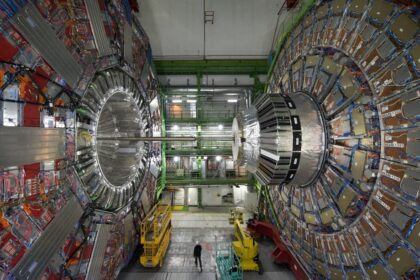A high stakes gathering in Hong Kong
Bitcoin Asia 2025 turned Hong Kong into a temporary capital for the global hash power economy. The two day conference convened miners, fund managers, exchange executives, infrastructure providers, and policymakers from across China, Kazakhstan, Southeast Asia, North America, and beyond. Conversations onstage and in the expo hall centered on energy, hardware, and strategy for a network whose security and issuance schedule are set in code but whose price depends on human belief and market liquidity.
- A high stakes gathering in Hong Kong
- Eric Trump’s million dollar call and the Trump crypto push
- Can bitcoin reach $1 million? Math, supply, and demand
- Miners’ reality: power prices, hardware, and regional hubs
- Hong Kong’s balancing act on regulation and risk
- China’s shadow influence and Asia’s mining map
- Institutional adoption, market depth, and liquidity
- Technology wildcards: Lightning, scaling, and quantum risk
- What a seven figure bitcoin would mean
- The Essentials
Hosted at the Hong Kong Convention and Exhibition Centre on August 28 and 29, the event is operated by BTC Inc, the group behind other major bitcoin gatherings. Organizers promoted more than 200 speakers and a large expo area. The city’s ambition to build a digital asset hub brought a surge of interest. South China Morning Post reported that more than 17,000 tickets were issued for this second edition, nearly triple last year’s attendance, while other pre event estimates suggested the total turnout could approach 20,000. The official site describes a main stage, a large expo floor, and curated spaces for business development and investment, as well as art and ordinals showcases available to attendees.
Unlike a generic tech expo, this meeting leaned toward the industrial backbone of bitcoin. Mining farm operators compared notes on electricity deals, machine efficiency, and post halving survival. Exchange executives highlighted custody, market structure, and new lines between retail and institutional business. Against that backdrop, a headline speaker placed a giant number on the marquee, turning a technical conference into front page news.
Eric Trump’s million dollar call and the Trump crypto push
Eric Trump, son of the United States president and a co founder of the mining and accumulation company American Bitcoin, told the Hong Kong audience that bitcoin will reach seven figures. His appearance in Hong Kong followed a summer of deepening involvement by the Trump family in crypto ventures, from mining to stablecoins to advisory roles at bitcoin treasury companies in Asia. He also took part in sessions titled All in on Bitcoin and Bitcoin Takes Over the World.
He framed the price outlook in absolute terms. Introducing himself as both an investor and an operator in mining, he told the crowd that nation states, major families, and Fortune 500 companies are buying and holding bitcoin for the long term. He said the community in Hong Kong represents the kind of global alignment he expects to drive demand for scarce digital money.
There’s no question Bitcoin hits $1 million.
Trump’s forecast echoed comments reported by multiple outlets covering the event. He also said he spends most of his time in the crypto community, praised Japan’s Metaplanet for building a bitcoin treasury, and urged investors to buy and hold through volatility. His mining company, American Bitcoin, is entering public markets via a reverse merger with Gryphon Digital Mining. The combined firm will trade on Nasdaq under the ABTC ticker. Market coverage of the merger noted that ABTC officially discloses a smaller reserve, while third party trackers suggest a larger balance, and that Gryphon shares rallied after the deal was announced. In Hong Kong, Trump promoted scale and efficiency as the path to mine and accumulate more sats. He has also claimed the company mines a large share of daily issuance, a point critics have questioned given the size of global hash rate.
Can bitcoin reach $1 million? Math, supply, and demand
Bitcoin’s code caps total supply at 21 million coins. By late August 2025 fewer than one million coins remained to be mined, and the block subsidy paid to miners halves roughly every four years, a schedule that slows new issuance. At a price near 108,000 dollars per coin, bitcoin’s market value sits around 2.1 trillion dollars. A price of one million dollars would imply more than 21 trillion dollars in value, larger than the market for investment gold and challenging established stores of value many institutions recognize.
The path from six figures to seven figures would require sustained demand and deeper markets. Proponents point to growing interest from nation states, large corporations, and family offices. Detractors point to volatility, thin order books compared with foreign exchange and sovereign debt, and ongoing policy risk. Technical analysts noted that bitcoin traded below its 50 day moving average in late August after pulling back from an all time high near 124,500 dollars, a sign that short term pressure could persist even if the long term narrative remains bullish.
Miners’ reality: power prices, hardware, and regional hubs
Mining is a commodity business with a digital twist. Electricity can make up 60 to 80 percent of operating costs, and machine efficiency determines how much of that power converts into rewarded hash rate. The most competitive miners secure cheap and stable electricity, negotiate long contracts, and operate in regions where policy is consistent and uptime is reliable. That is why Asia remains the anchor of global hash power, even as North America, the Middle East, and parts of Latin America expand capacity. The industry sits at the junction of energy, semiconductors, and data center infrastructure, which makes it capital intensive and operationally complex.
Why power prices decide winners
Every miner lives by a simple equation. The cost to produce a bitcoin must sit below the price they can sell it for, net of fees, maintenance, and downtime. When the halving cut block rewards in half, only the most efficient operators could keep margins healthy. Regions with stranded hydro, curtailed wind, or reliable natural gas often produce the most attractive power contracts. When a heat wave, drought, or transmission constraint hits, profitability can swing quickly. This is why many mining teams diversify across multiple grids and countries, and why they invest in demand response programs, immersion cooling, and maintenance that extends machine life.
Hardware and scale
Application specific integrated circuits designed only for bitcoin dominate this sector. Each new generation squeezes more hashes out of every joule. Large miners benefit from bulk pricing on machines, factory warranties, logistical support, and the ability to mix fleets across different chip makers and efficiency tiers. Treasury strategy matters too. Some firms sell daily to cover costs. Others, including American Bitcoin’s accumulation approach, hold larger balances on balance sheet. Trump has promoted a claim that his outfit mines a meaningful fraction of new coins each day, a statement that drew scrutiny from analysts who track hash rate distribution across many pools and continents.
Hong Kong’s balancing act on regulation and risk
Hong Kong used the conference to signal ambition and caution at once. Authorities want the city to be a place where licensed exchanges, custodians, token issuers, and Web3 firms can operate under clear rules. Experts told local media that Hong Kong could help shape the regulatory conversation in Asia if it continues to build policy in public and coordinate with peers. Organizers said ticketing eclipsed last year’s count, and the Securities and Futures Commission sent a representative to speak with industry, a sign that dialogue remains open even as policymakers stress investor protection.
Politics also found the stage. A senior SFC executive and a lawmaker withdrew from the program after Eric Trump’s participation was announced, and the regulator fielded questions about high level involvement. Clarence Shen, an SFC manager who oversees fintech policy, attended instead. Reports said officials had been advised to keep a low profile on crypto topics while stablecoins and cross border capital flows face scrutiny. The backdrop includes heightened trade tensions between the United States and China, with tariffs biting into regional commerce. The episode underscored how digital assets touch sensitive themes that extend beyond markets and technology.
China’s shadow influence and Asia’s mining map
Mainland authorities banned most crypto trading and declared related transactions illegal in 2021, yet China still exerts influence across the sector. Some peer to peer activity persists, and parts of the supply chain that serve miners, from component manufacturing to logistics, remain anchored in Chinese industry. In parallel, bitcoin mining thrives across Central Asia and parts of Southeast Asia, where governments and utilities see an opportunity to soak up excess power and attract data center investment. The Middle East, with abundant energy and growing data infrastructure, continues its own build out.
In Hong Kong, Eric Trump saluted China’s role while arguing that the United States and China sit at the front of a global race to define digital money’s future. He pointed to rising institutional participation as evidence that crypto has moved out of a niche. Then he reached for a line that captured headlines.
China is a hell of a power in crypto.
Analysts add that Hong Kong’s distinct legal system and active licensing agenda give Beijing a place to watch market behavior and policy choices without reopening the mainland to retail trading. Officials in Hong Kong have drafted stablecoin legislation and refined licensing, hoping to channel global interest into a safer ecosystem. How much capital and talent the city can attract will depend on consistent rulemaking and trust, especially as the mining industry weighs energy prices, cross border payments, and equipment imports across multiple jurisdictions.
Institutional adoption, market depth, and liquidity
Speakers and sponsors touted a wave of institutional activity. Trump said nation states, large companies, and major families are buying and holding. Japan’s Metaplanet drew praise for adding bitcoin to its balance sheet. Mining firms are consolidating, merging, and preparing to list shares on public exchanges. Exchange traded products and regulated custody now give more conservative allocators a way to gain exposure without moving coins themselves. Each of these steps can add buyers and increase the free float held by long term investors.
Even with those trends, bitcoin’s market depth remains limited compared with the deepest asset classes. Liquidity depends on a patchwork of spot exchanges, market makers, derivatives venues, and stablecoin rails. When large orders hit a thin order book, price can move quickly in both directions. This structure helps explain why the asset can rise or fall by double digits in a matter of days, even as adoption by institutions grows over time. The conference conversations reflected that tension between grand narratives and the day to day mechanics of trading and settlement.
Technology wildcards: Lightning, scaling, and quantum risk
Technology can change user experience without changing bitcoin’s monetary policy. The Lightning Network, a payment layer built on top of bitcoin, promises fast and cheap transactions that settle off chain and batch later on chain. Several wallets, exchanges, and merchants support Lightning, and developers have improved liquidity management. Even so, volumes have lagged the boldest expectations, and operating channels can be complex for businesses that do not specialize in payments. For large consumer platforms, compliance and identity checks add friction that slows deployment.
On chain congestion comes and goes. Bursts of activity tied to ordinals and inscriptions can crowd mempools and push fees higher. When that happens, miners earn more from transaction fees, yet small dollar users may wait longer to confirm payments. Alternative scaling ideas exist, but the community tends to prioritize security and simplicity over fast changes, which keeps bitcoin’s base layer conservative and pushes most experimentation to layers above it.
Quantum computing sits further out on the risk horizon. Bitcoin’s security relies on cryptography that could face threats if powerful quantum machines arrive. Researchers have mapped migration paths to quantum safe signatures, yet switching would require planning, testing, and coordination across wallets, exchanges, miners, and node operators. Most experts do not see an immediate threat, but builders and policymakers keep the topic on the agenda because secure savings require long time horizons.
What a seven figure bitcoin would mean
A price tag of one million dollars per coin would create a market value above 21 trillion dollars. That would eclipse gold and would rank bitcoin alongside the largest asset classes in finance. The signal to governments, banks, and savers would be profound. Central banks would face pressure to clarify how they view a private digital bearer asset that large. Large asset managers would formalize mandates. Corporate treasuries would revisit hedging policies. Miners would earn large nominal rewards, which would attract new entrants and prompt fresh scrutiny of energy usage.
Energy debate would intensify. Profit draws hash rate to the cheapest power available. That can accelerate investment in renewables and grid balancing in some regions and trigger backlash in others. Countries rich in stranded energy could recruit miners to monetize assets that otherwise go unused. Jurisdictions with weak grids could restrict mining to protect consumers. The next chapters will likely be written by public utility commissions as much as by crypto founders.
Policy will shape the market at least as much as tech. The United States is moving toward clearer rules for stablecoins and disclosures. The European Union has MiCA. Mainland China maintains a strict stance on trading while tolerating some gray areas in hardware and data center work. Hong Kong is building a licensing regime and testing a cautious opening. Markets respond when rules are clear. That is why miners, exchanges, and funds packed into Wan Chai for two days of panels and meetings. The price target grabbed headlines. The deeper story was a maturing industry that still runs into friction wherever energy, capital controls, and geopolitics meet.
The Essentials
- Bitcoin Asia 2025 ran August 28 to 29 at the Hong Kong Convention and Exhibition Centre.
- Organizers issued more than 17,000 tickets, with estimates of attendance near 20,000.
- Eric Trump told the crowd, There’s no question Bitcoin hits 1 million dollars.
- He promoted American Bitcoin’s reverse merger with Gryphon Digital Mining to list on Nasdaq under ABTC.
- Bitcoin traded near 108,000 to 110,000 dollars during the event after a recent high around 124,500.
- Miners highlighted cheap, stable electricity, efficient hardware, and scale as survival tools after the halving.
- Hong Kong advanced its hub ambitions while senior officials navigated sensitivities linked to the Trump family.
- Speakers cited growing purchases by nation states and large companies, yet liquidity remains thin compared with major asset classes.
- Lightning adoption lags early hopes, and quantum security remains a long term question for the network.
- A one million dollar price would put bitcoin’s value above 21 trillion dollars, larger than gold.












